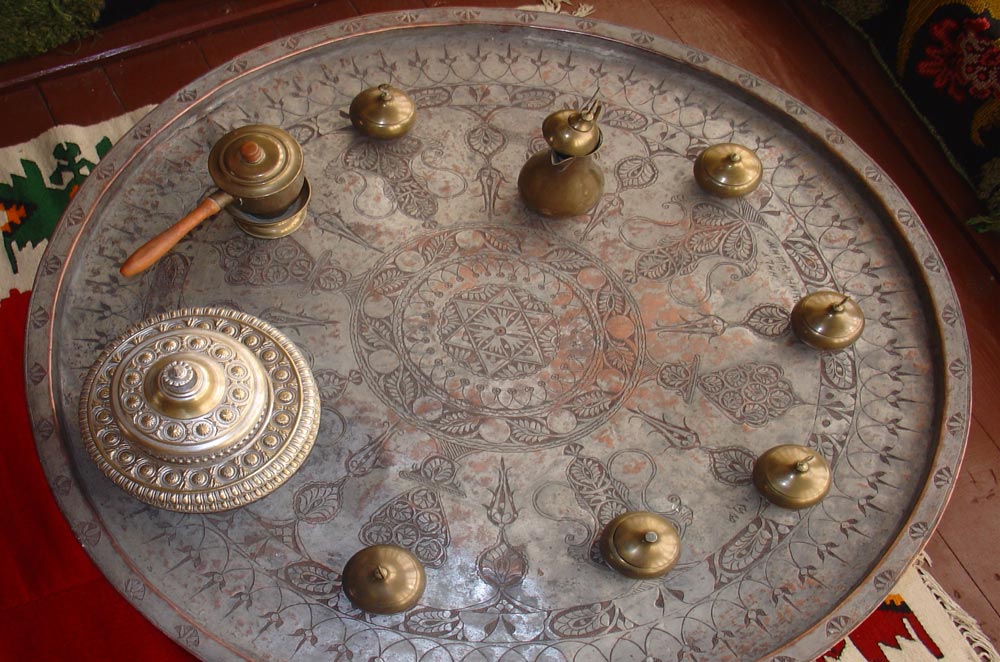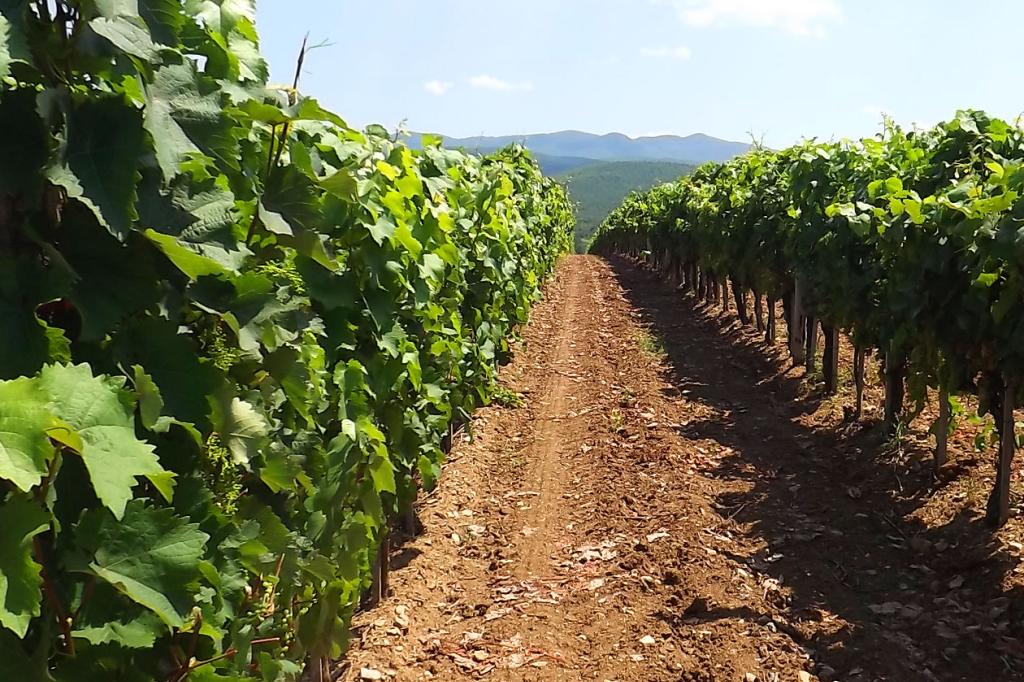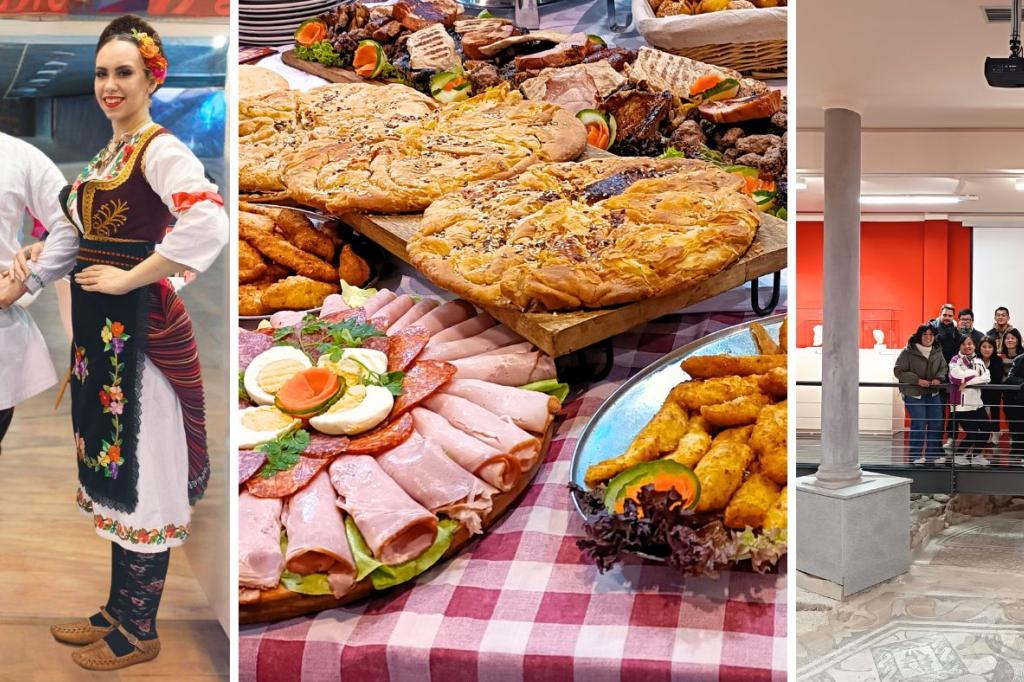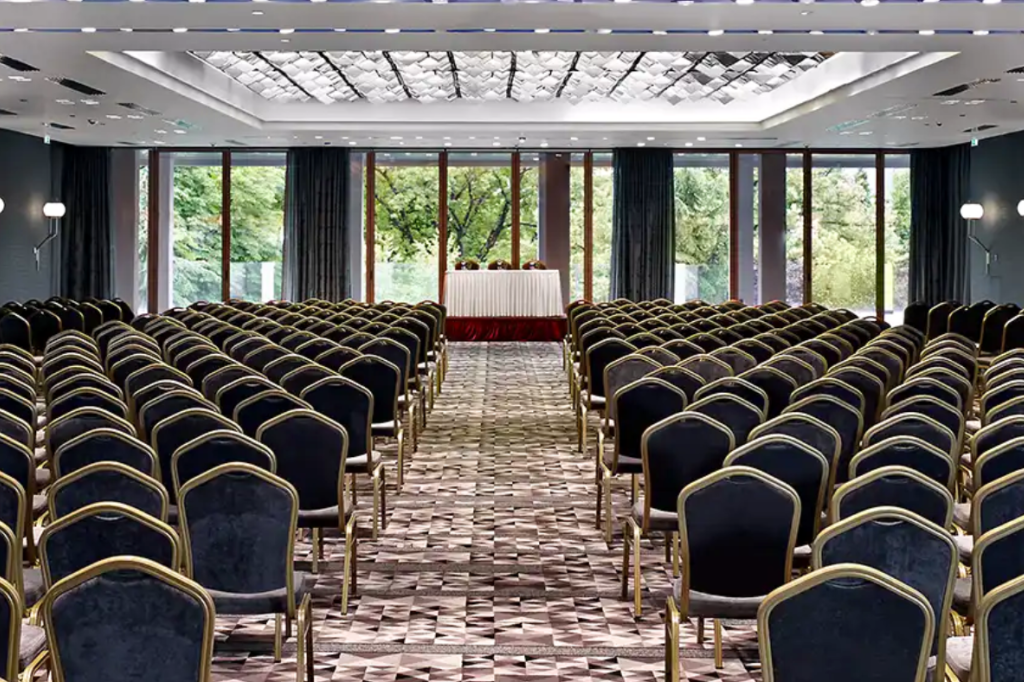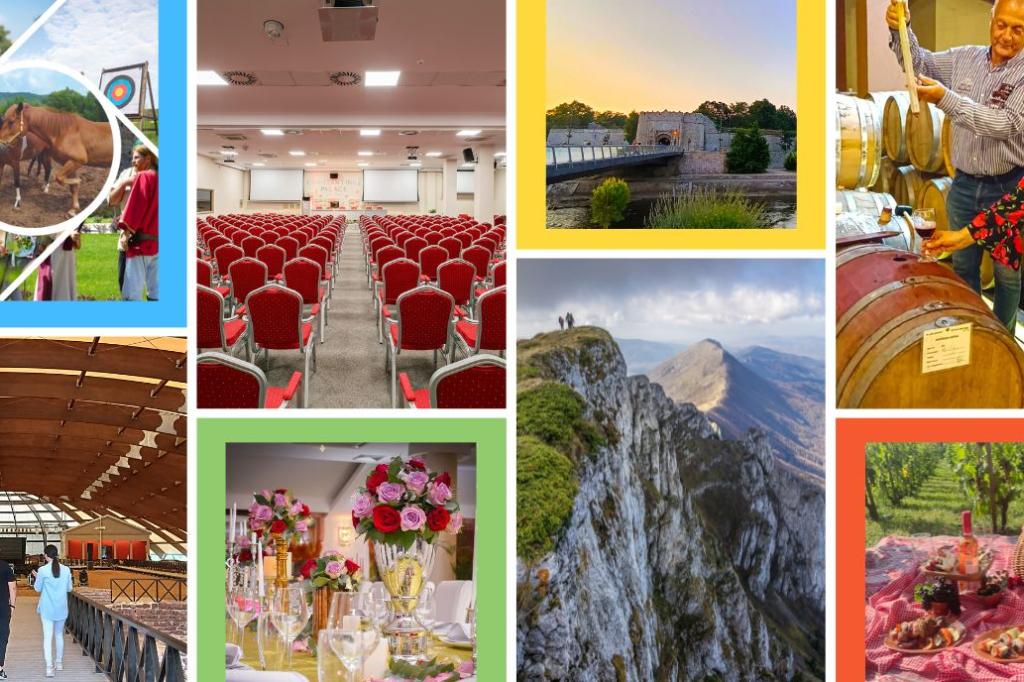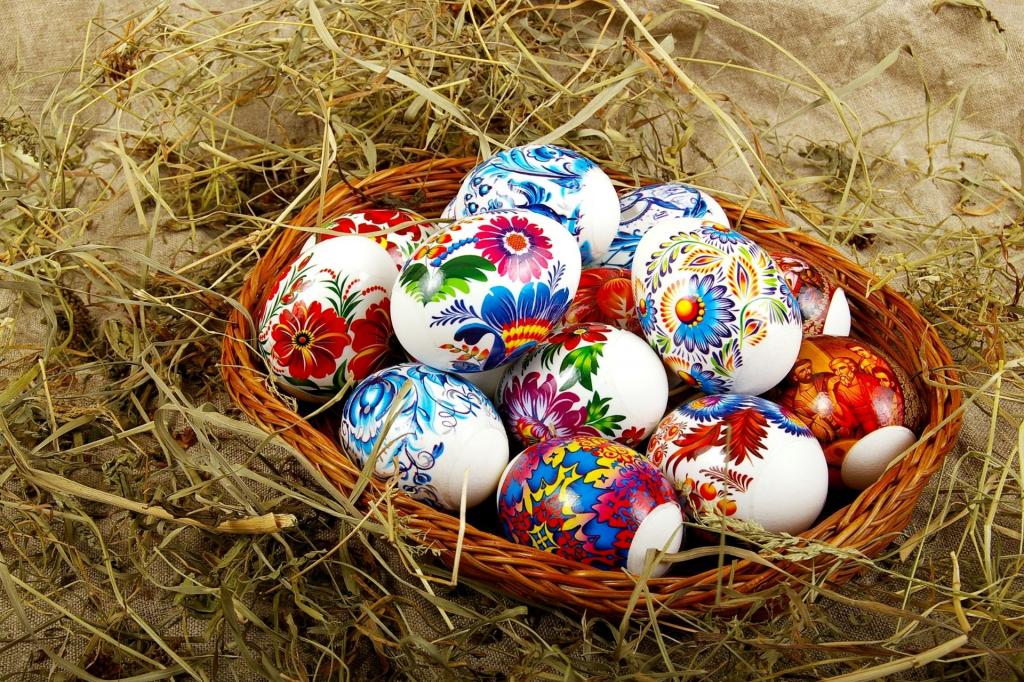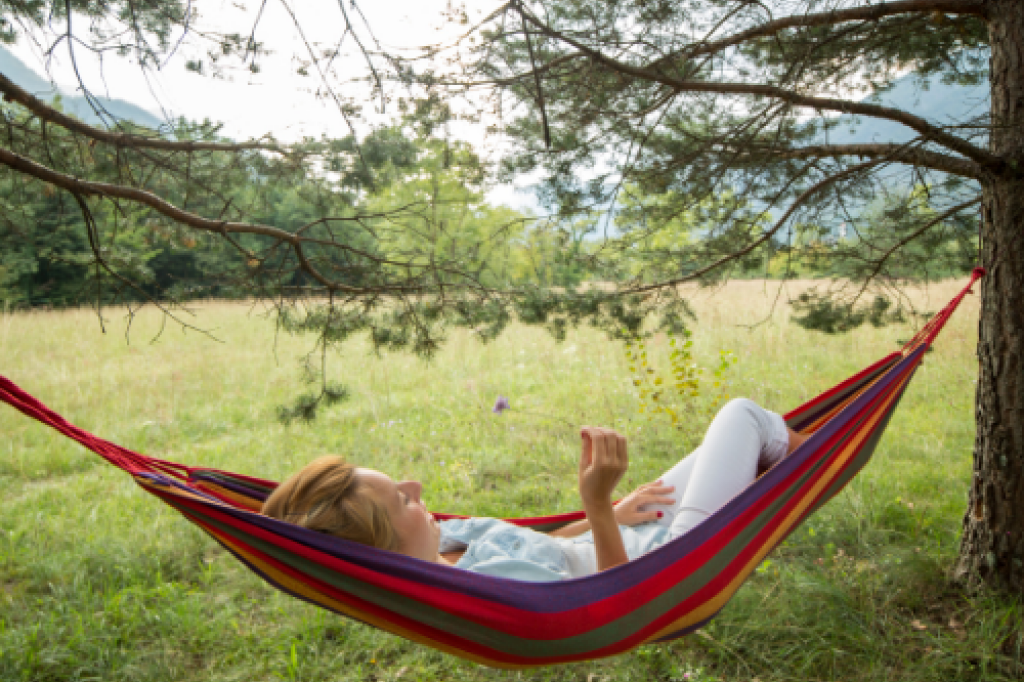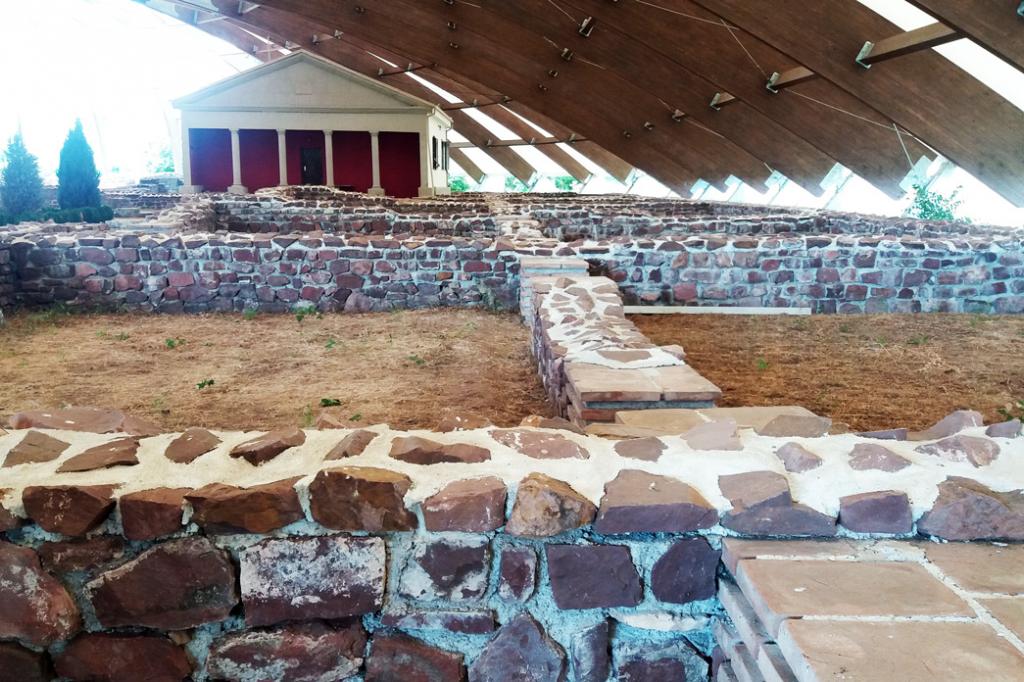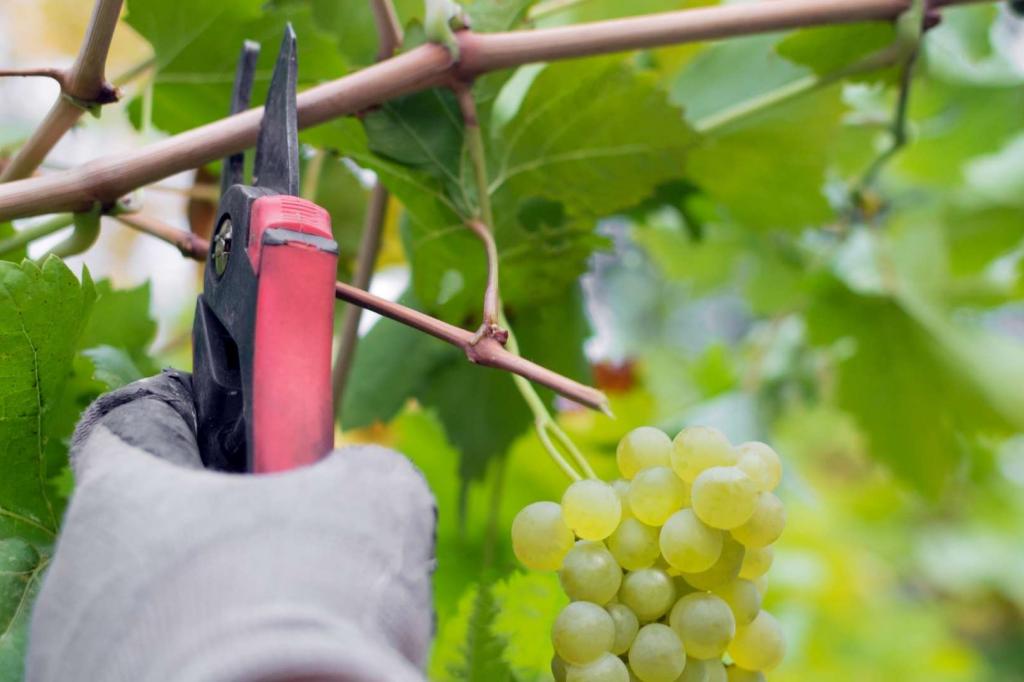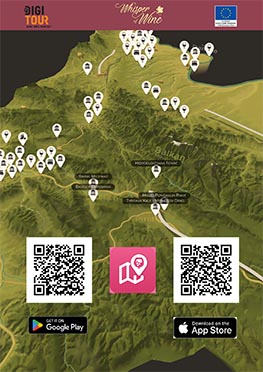Southern Serbia is known for its folkloric music, delicious food specialties, Pirot carpets, peppers, cottage, caciocavallo cheese (kačkavalj), and most of all, hospitality. After the rich food, you would love to feel the sharp mountain air of Stara Planina (Old or Balkan Mountain), Suva Planina (Dry Mountain), Besna Kobila (Mad Mare) Mountain, and Kopaonik Mountain.
This is the reachest part of the unspoiled nature in Serbia. All kinds of outdoor sports and activities are available here, from extreme till rejuvenating. Here you can enjoy skiing, snowboarding, hiking, biking, free climbing, sky running, kayaking, fishing, enjoying by the lakes and rivers, rejuvenating in the villages and spa & wellness centers, visiting cultural-historical monuments, monasteries, archaeological sites, and many more.
The traffic infrastructure of the eastern and southern arms of the international road Corridor 10 that passing through Serbia has been completed and is able now quickly, comfortably and safely travel through Nis to Pirot, Dimitrovgrad, Bulgaria (Sofia) and Turkey (Istanbul), as well as via Nis to Leskovac, Vranje, Presevo, North Macedonia (Skopje), and Greece (Thessaloniki).
Justiniana Prima - The Empress' Town
Archaeological site Justiniana Prima just 29 km from Leskovac City was Christian Byzantine town from the 6th century, built for Archbishopric imperial estate of Central Balkan. It was one of the largest and most prosperous cities in this area. Emperor Justinian I, traditionaly known as Justinian the Great who built this remarkable town, has also recognizable for construction of the famous Holy Wisdom Church, later converted into a Mosque, and today a famous Museum Hagia Sofia in Istanbul. Empress’ Town is the second name for this archaeological site, according to some beliefs it was built as the contribution of Emperor Justinian I to his love, beautiful and ambitious wife, Empress Theodora.
At the most elevated site in the city - Acropolis had settled the church administration, and right there has also discovered a large cathedral church with three apses, atrium, and baptistery, representing one of the most magnificent monuments of Byzantine architecture in the Balkans. Discoveries such as Justinian's seals and glasshouses are unique in this region.
Visitors can enjoy watching 3D restitution of the former Empress' Town.
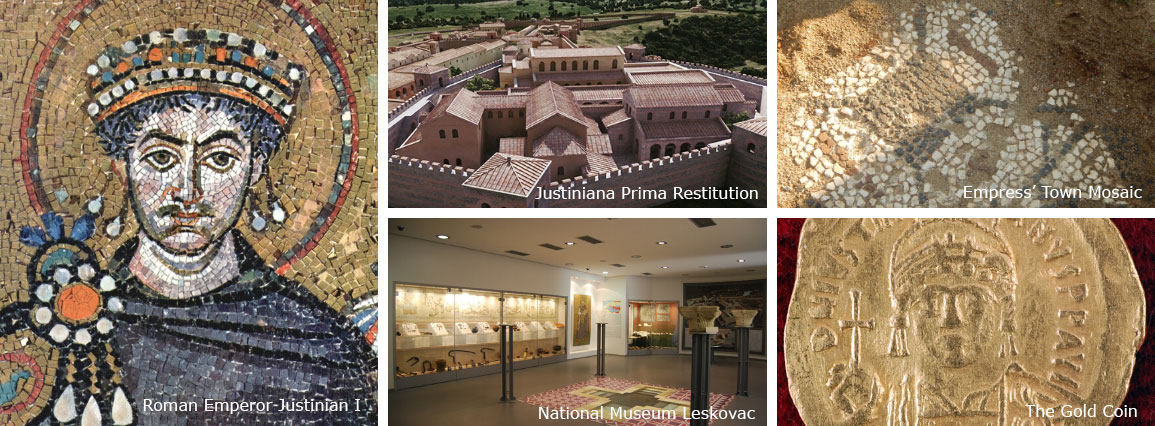
After the death of Emperor of Justinian I, the city faced continual attacks from barbarian raiders. The Slavs, and later the Bulgars, eventually succeeded in settling within the Roman provinces in the 7th century. But after all frequent attacks and probably destruction of the aqueduct, the city left to its degradation and disappearance.
The tireless hydroelectric power station Vucje and the Leskovac Train
The Vucje hydroelectric plant is the second hydroelectric power plant built-in 1903 in Serbia and the Balkans. Listed as valuable industrial heritage, it has been operating continuously until today with more than a hundred years old Siemens generators. Most responsible for its construction is Professor Djordje Stanojevic, a personal friend of Nikola Tesla and the founder of electrification in Serbia.
The beautiful nature of the Vucjanka River Canyon is ideal for enjoying the adrenaline sports, abseiling, canyoning, and hiking up to medieval Skobaljic or Zelen Grad (Skobalic or Green Town). The remains of the fortress, according to beliefs, had built by the famous Duke Nikola Skobaljic around the 15th century known as the great hero who fought the Turks without suffering any defeat. Thanks to archaeological research of the multilayered area, discovered that first layers originate from the Eneolithic - Copper Age.
Leskovac City is the most famous for planting red pepper, which has used for cooking the famous Serbian pickle Ajvar. And of course, there is a barbecue, out of which the most popular meal is Leskovac Train, served as at least three-course meat meals, Cevap (sort of Kebab), Pljeskavica (Burger), and Ustipak (Meatballs).
On the slopes of Hisar Hill near Leskovac, a large number of archaeological objects have discovered that testify to the life of seven millennia. A fascinating invention found at this locality is a Turovic Needle, made of the iron of almost a hundred percent purity.
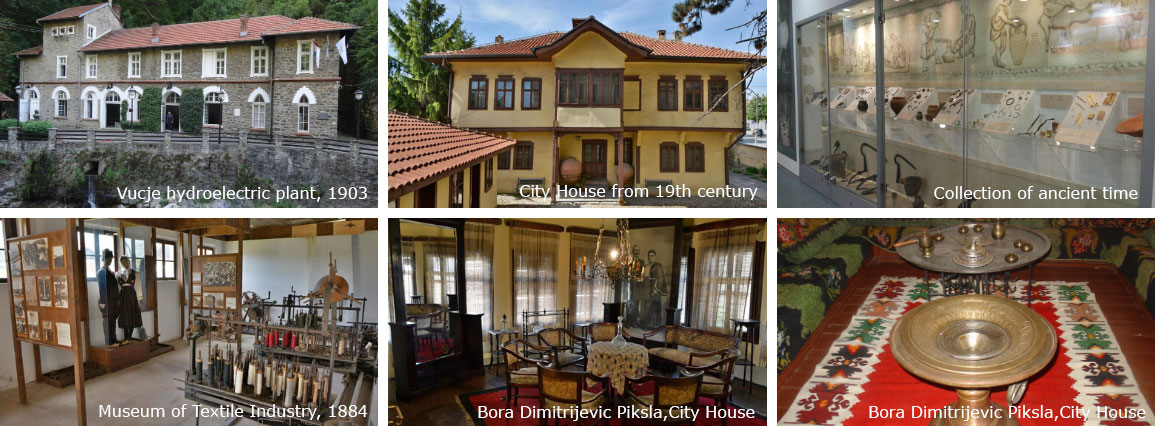
The places of interest that you should visit are, National Musem, ethnographic exhibitions staged in two city houses that belong to traditional Balkan Style architecture from the first half of the 19th century. Bora Dimitrijevic Piksla’s House, the former seat of Turkish Pasha. And the symbol of Leskovac, Šop-Djokic House.
Don't miss The Museum of Textile Industry, located in the Strojkovce Village, 11 km away from Leskovac, where is located the first built factory for sewing thread production in 1884 that was a foundation of the Serbian textile industry in the 20th century.
Vlaisna Lake with floating islands
After the rich food in Leskovac, you will appreciate the sharp air a little bit further south at Vlasina Lake, where floating peat islands are waiting for you. Vlasina Lake is the biggest artificial lake in Serbia created on vast mountain peat at 1213 m altitude. The peat floating islands created naturally after the dam is built, floating freely in the wind. Floating islands are the landmark of Vlasina, while the color of the lake changes in countless shades of blue and green.
Surrounded by mountains Cemernik and Vardenik, Vlasina offers tranquility, greenery, beautiful scents of herbs spreading over in spring and summer, chill mornings, and evenings even during hot summers. Perfect for outdoor sports, hiking, biking, watersports, bird watching, fishing. The lake is rich full of catfish, carp, bass fish, and trout.
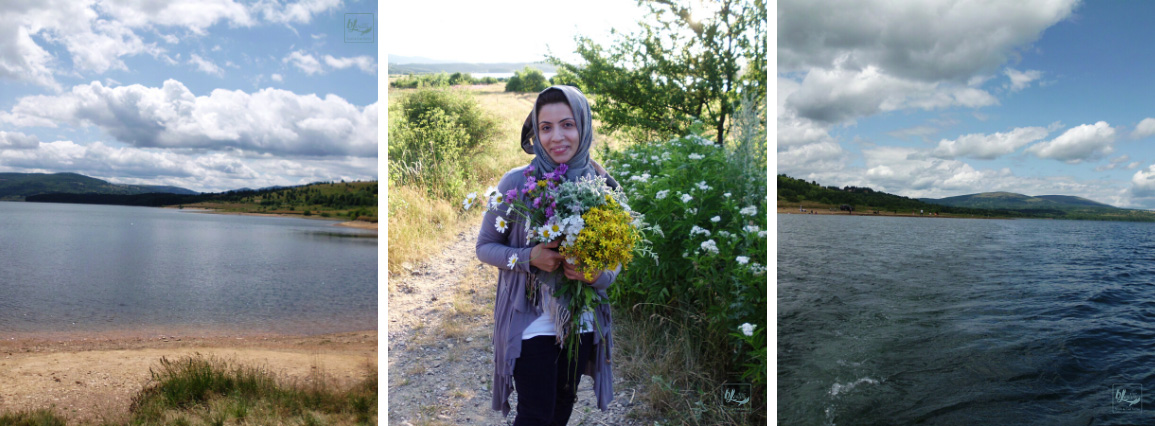
The most famous Balkan trumpet orchestra has come from Vladicin Han, a small town at the foothill of Vlasina. Today, Boban Markovic and his son Marko become world-famous musicians of ethno music. Serbian writer Bora Stankovic used to write about one more town: "Surdulica is a place that provides personal rest and rejuvenation itself, settled between the wilderness of Vlasina, the gentleness of the village Topli Do and the wideness of Masuric meadows." King Alexander Karadjordjevic opened the Sanatorium for Pulmonary Diseases in 1921, where the refreshing air was a remedy.
The First World War has done much harm to Surdulica, contributing to the social trauma by torturing Serb prisoners and citizens. After liberation, in 1924, King Alexander Karadjordjevic built a Memorial Ossuary and Memorial High School as a commemoration to the victims of these crimes.
Spa Town Sijarinska Banja
Spa Town Sijarinska Banja has located 52 km from Leskovac, and 64 km from Nis, at the foot of Goljak Mountain, named after the scattered mountain village of Sijarina. Many historical facts testify that this region was inhabited and had an intensive life since ancient times, first during the Roman Empire, and later Byzantium. The volcanic landscape, linked by a series of earth layers that carry a variety of ores, also has numerous deep mineral waters.
The Spa has placed in a valley, surrounded by lush vegetation, with a subalpine climate. The spa climate is pleasant due to surrounding hills and forests that protect the spa from strong winds, and cold air currents. Winters are mild without heavy rains and snow. The spa has 18 springs with a therapeutic usage with water temperature that varies from 32°C to 72 °C.
A complex of the swimming pools and fountains have built around the geyser of hot water that reaches a height of 8 m representing a particular beauty, and attraction, unique in Europe.
Warm emotions from the south Vranje
The love songs from Vranje that are singing in all the Kafanas in Serbia, and recognizable dance, carry a warm emotion that conveys to the visitors.The National Museum of Vranje, housed in Selamluk with its exclusive collections, is a true testimony to the history of this region, from the earliest time to the beginning of a modern era. The permanent exhibit includes a collection of utensils and decorative items to jewelry, clothing, and weapons from Selamluk, meaning the male or public quarters of the house, and Haremluk (Harem), female or family quarters of the house. There is also a collection of archaeological findings too.
The White Bridge on the Vranjska River has built as per Aisha's last wish in the name of love between the Turkish girl and Stojan Serbian shepherd. The legend of the Serbian Romeo and Juliet is a story that every man from Vranje would proudly tell you.
A drama Kostana and a novelle Necista Krv (Impured Blood) written by famous Serbian writer Bora Stankovic who was born in Vranje, introduces readers with customs and traditions of the south. After the death of his parents, he lived with his grandmother Zlata, a father's mother. He inherited a talent for writing, listening to her storytelling, and singing. The House of Bora Stankovic built-in 1855, has the status of a Cultural monument of great importance. Today it is a museum located in the Baba Zlata Street with a vibrant atmosphere of past times.
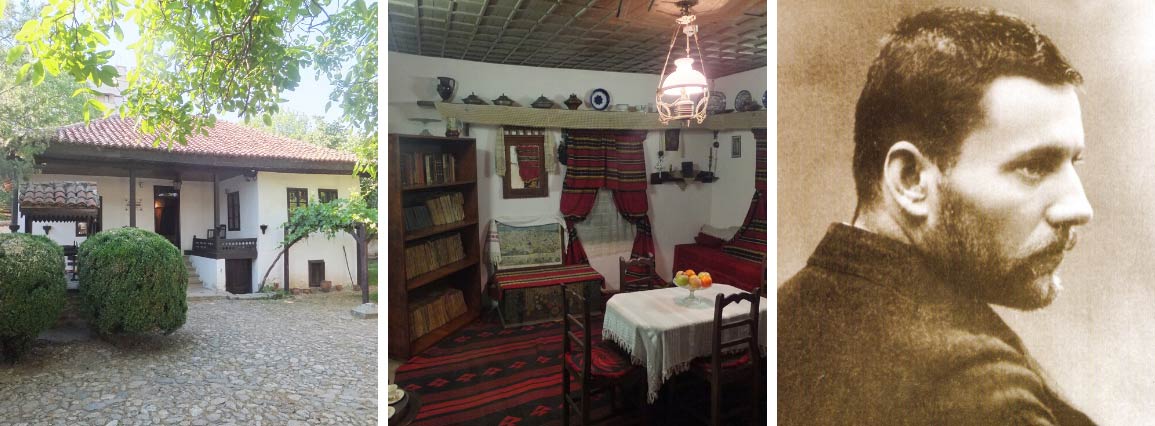
The fortress Markovo Kale, around 5 km away from Vranje, was the city of Marko Kraljevic, the famous and the strongest man according to folk tradition. This medieval historical monument dating from the 13th century, but some of the most significant archaeological facts testify that life at this site had begun in prehistoric times, continued in late Antiquity, ended up in the early Byzantine period.
Besna Kobila (Made Mare) Mountain rises in the south of Serbia, 40km east from Vranje, near the international highway E-75. At the foot of the mountain is located Vranjska Banja Spa, known for its healing springs of thermal water. The highest peak is at 1923m, and the mountain is rich in the wildness of medicinal plants and wild fruits. Mountain lodge Besna Kobila located at an altitude of 1480 m, offers the capacity of 80 beds.
Spa Town Vranjska Banja
Vranjska Banja is proud of its warmest thermal springs in Europe. Only the thermal waters of Iceland, and Yellowstone geysers are warmer than these one here. Water temperature varies from 61°C at the ferrous water spring to 84°C at the sulphureous spring, 94°C at the main spring up to 110°C when taken from the drill. This hot water is an aid in curing rheumatism, neuralgias, post-traumatic states, initial sterility in women, respiratory system diseases. The properties of water are as excellent as a therapeutic agent and drinking. Treatments of degenerative rheumatism, and posttraumatic states are conducted in the well equipped Institute for prevention, healing and rehabilitation, launched in 1971.
People had been continually attracted by the magical power of the Spa thermal waters since Dardans, Thracians, Illrycs, Celts, Romans, Byzantines. Even known from Medieval Serbia, its reputation riched while the Turkish rule.
Spa Town Bujanovacka Banja
Bujanovacka Banja is located in the south of Serbia, 14 km away from Vranje, 2.5 km from Bujanovac, and 125 km from Nis. The most famous thermal spring in Spa has a water temperature of 43°C. Various spa treatments using thermal water, Peloid medicinal mud or gas, are recommended for a wide range of Rheumatic diseases, post-traumatic conditions, gynecological diseases, blood vessel diseases, and psoriasis.
What sets apart this Spa from the others in Serbia is the volcanic Peloid mud that makes incredible improvements, and cures for many diseases. This mud is used raw or after getting ripened, but after mixing with paraffin, a product bears the name Parafango and can use for at-home treatments.
This Spa stands out as the only spa in our country that uses the most modern methods in the treatment of natural gas - carbon dioxide. What is phenomenal is its 98 percent purity, and almost no other spa in Europe owns such gas. The use of gas is exceptional in treating diseases such as angina pectoris or stable angina, as well as in peripheral arteriosclerosis, and results are better after only three weeks.
Bujanovacka Banja Spa has phenomenal potential to become a world-renowned center because natural wealth cannot be invented or artificially made, nor even replaced.
Monastery St. Prohor Pcinjski
Monastery St. Prohor Pcinjski (Venerable Prohor of Pcinja) was built by the Byzantine Emperor Romanos IV Diogenes, at the request of the latter saint and patron saint of the Monastery of Prohor Pcinjski. A systematic archaeological excavation, with a more comprehensive analysis of current knowledge, would confirm the claim that the original modest one-nave church was built in the XI century or at the beginning of the XII century. The monastery is the second largest Serbian Orthodox Monastery after Hilandar.
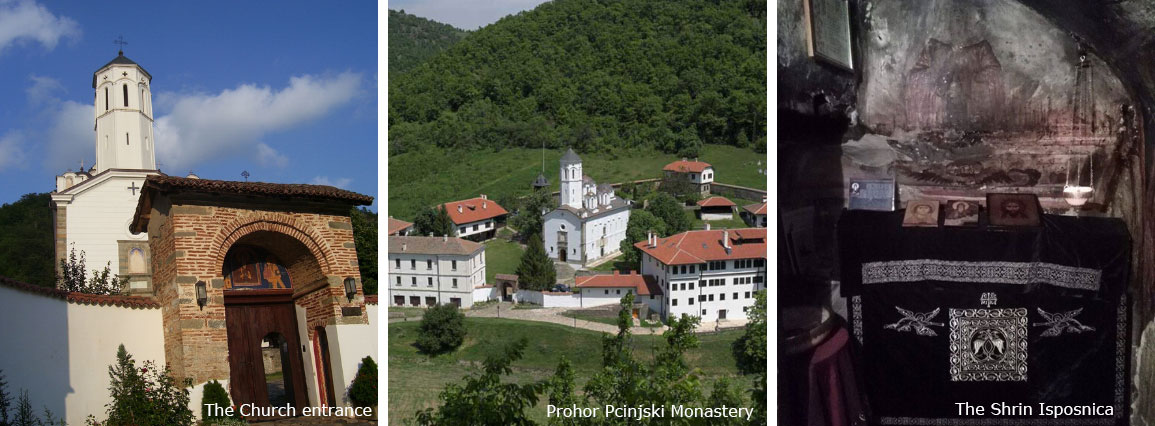
The shrine built at the old cult site Isposnica was a place where the Venerable Prohor Pcinjski lived hermit life. The entrance in the cave on the rock could only be possible by crawling. Despite the lack of reliable material evidence, there is a reason to claim that the present tomb of St. Prohor was a part of the original. The only preserved is the chapel, small, low rectangular room, where are kept the relics of St. Prohor Pcinjski. In the spherically shaped east side are the relics of the saints, where, in the upper right corner, is a small hole from where miraculous Chrism (Myrrh, Myron) holy anointing oil comes out for millennia. The rule was that believers wash their feet first with that water, and then barefoot crawl with an inflamed candle to the shrine for prayer.
Within the monastery, there is a theological school and iconography is taught there. The monastery declared as Monument of Culture of Exceptional Importance in 1979, and is under protection by the Republic of Serbia.
The warmth of the Toplica
The whole area, as well as the river that flows through Toplica, has named after a large number of warm mineral water sources. Toplica meaning is similar to Spa consists of three famous spas in Serbia, Prolom Banja Spa, Lukovska Banja Spa, Kursumlijska Banja Spa, known since Roman times. Toplica is an area in southern Serbia that encompasses the valley of the river Toplica. The Kopaonik Mountain forms its western border. The northern boundary consists of the Mali and Veliki Jastrebac Mountain (Little and Big Hawk). To the east of Toplica is Nis, while the mountains Vidojevica and Pasjaca form the southern boundry.
The archaeological site in this area belongs to Neolithic Vinca Culture - Plocnik that provides the earliest known example of copper metallurgy in Europe. The Vinca culture occupied a region of southeastern Europe (the Balkans) corresponding mainly to present-day Serbia but also parts of Romania, Bulgaria, Bosnia, Montenegro, North Macedonia, and Greece. There are the first endowments of Stefan Nemanja, Saint Nicholas Monastery, and The Most Holy Mother of God Monastery in Kursumlija. The Church of St. Procopius from the late IX or early X century, located in Prokuplje, is the second oldest church in Serbia. In 1386, Serb forces defeated the Ottomans near Plocnik, and the Natural Wonder Devil's Town has located in Toplica, near Prolom Banja Spa.
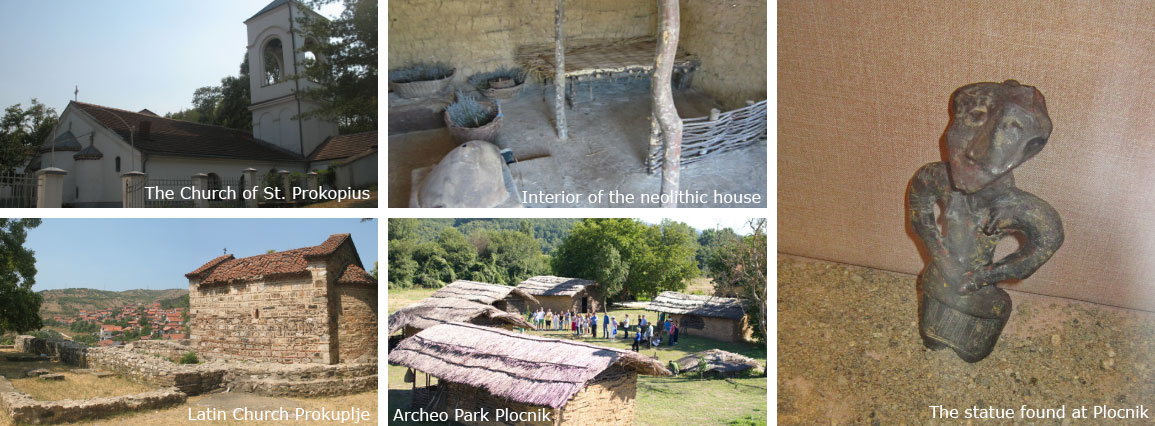
Written sources and archeological sites in the area of Toplica confirm the existence of older cultures, namely Dardance and Celts, but also the fact that this area, as well as surrounding areas, was covered by sites of Roman military and civilian structures such as the Castellum Hameum near Prokuplje and the Castellum Ad Fines near Kursumlija, known at time of Roman cities Naissus (present-day Nis) and Remesiana (present-day Bela Palanka). Castellum is a name the Romans had used for a smaller, isolated fortification, which usually had served as an observation post or signal station.
Paleontological Site Prebreza
The fossils of the mammals that are well-preserved existed between 14 and 16 million years old, as well as prehistoric animals and plants have been discovered in the paleontological site of Prebreza, near small town Blace. The remains of a lying petrified bird also found here, indicating that a sudden and unexpected elemental or natural disaster has occurred in the area. As well discovered in this area are the remains of 12 large mammals, several of which were only found in Europe, while remains of Miocene hyenas and gazelles discovered in Prebreza without prior knowledge of science. Numerous found remains of other animals, no longer live on the European continent.
Prebreza is the only paleontological site in Serbia, and it is under the protection of Serbia. The Museum of Natural History in Belgrade keeps the original remains found, while replicas are visible in the open-air exhibition in Prebreza.
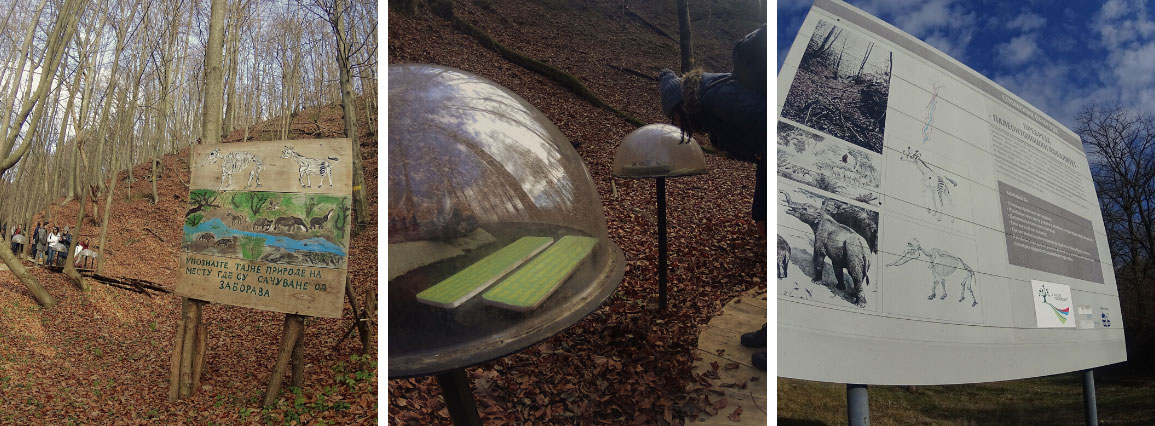
Spa Town Prolom Banja
Spa Town Prolom Banja is located in the south of Serbia, on the slopes of Radan Mountain, with thick forest. Its altitude ranges from 550 m to 668 m, and it is among the highest spas in Serbia. The climate is moderately continental, with some subalpine features. It results in mild summers, with fresh evenings and cold, long winters. The climatic factors of the Prolom Spa characterize low humidity, and a gentle breeze.
Prolom Spa is 82 km from away from Nis, 21 km from Kursumlija, 75 km from Leskovac, 90 km from Krusevac, and 290 km away from Belgrade.
The Spa became famous for its bottled Prolom Water that you can buy in any supermarket. This water belongs to a rare type of mineral water, of high balneological value, which makes it suitable for a wide range of indications. Water temperature ranges between 26 ̊C and 31.5 ̊C. It is mild, pleasant, and odorless recommended for everyone. It reduces the acidity of gastric juice, it is recognized for its powerful effect on removing kidney stones and sand and affects all kidney diseases as well, it has a diuretic and bacteriostatic effect.
The treatments at Radan Hotel conducts through, drinking mineral water, hydrotherapy, mud therapy, electrotherapy, chinese therapy, and manual massage.
Spa Town Kursumlijska Banja
With the most pleasant climate of all spas in Serbia, Kursumlijska Banja with its natural environment that makes up forests, the Banjska River and a small stream with clean water, along with clean air with no industry nearby is true health and recreation resort. Kursumlijska Banja Spa has several types of medicinal waters (sulfur, carbonic acid, alkaline, and iron waters), which ranks the spa among the most attractive in Europe. Water temperatures range from 14°C-67 °C. Medical indications for staying in the Spa include diseases of the musculoskeletal system, gynecological diseases, neurological diseases, metabolic diseases.
Kursumlijska Banja is 74 km from away from Nis, 45 km from Prokuplje, 95 km from Leskovac, 79 km from Krusevac, and 274 km away from Belgrade.
Kursumlija City only 12 km away from the Spa was the first capital of Stevan Nemanja, the founder of the famous and significant Nemanjic Dynasty. Just here in Kursumlija, Stevan Nemanja built The Most Holy Mother of God Monastery and St. Nicholas Monastery.
Spa Town Lukovska Banja
Spa Town Lukovska Banja is located in Southern Serbia, on the eastern slopes of Kopaonik Mountain at 681 m above sea level, and classified in the highest spa in Serbia. The climate is temperate continental with many sunny days a year. Many thermal mineral springs, the untouched nature, and the clean mountain air defined it as one of the best spas in Serbia. The Spa itself has a view of some of the beautiful peaks. Nature is invaluable here for the climate and clean air, and statistics say that more than 60% of the rural area has covered by forests, 30% by pastures and meadows, and 10% by arable land, well a true small natural paradise. The total number of natural and artificial sources of medicinal thermal water in Lukovska Banja is 37, which places it in the first place of all spas in Serbia, at least by the number of thermal springs. The water temperature in Lukovska Banja ranges from 22 °C to 65 °C.
Your stay could be at one of the two hotels, Kopaonik Hotel and Jelak Hotel, which in their offer combined accommodation in comfortable rooms, thermal pools, and modern medical & wellness treatments. Medical indications for staying in the Spa include diseases of the inflammatory rheumatism, degenerative rheumatism, extra-articular rheumatism, osteoporosis, and osteopenia, rehabilitation after bone and joint surgery, problems with blood vessels, blood pressure problems, and idney and urinary system disorder.
You could improve your health and stay active by walking the paths to health through the beautiful nature, playing sports, or visiting some of the cultural and historical monuments.
Krusevac the city of Princ Lazar
Featuring a very favorable geographical position, Krusevac area inhabited the population even in prehistoric times. Archaeological findings speak of life in this area since the Neolithic. However, the search for the origin of Krusevac leads us to the middle Ages, in the time of Prince Lazar, who introduced it to history as its capital in the eighth decade of the XIV century.
The Battle of Kosovo took place on June 15, 1389, between an army lead by the Serbian Prince Lazar Hrebeljanovic and invading Ottoman Empire, led by Sultan Murad I. During the battle, Prince Lazar was captured and killed, as well as many prominent Serbian warriors. The most important holiday for Krusevac is certainly Vidovdan, deeply rooted in the consciousness of the population in this region as the day of Prince Lazar's death and his struggle to protect his state and people. In Serbian tradition, anniversaries of the battle have celebrated on June 28, Gregorian calendar in the 20th and 21st centuries, which corresponds to Jun 15, (Vidovdan, that is St. Vitus' Day in the Julian calendar of the Serbian Orthodox Church).
Archaeological Park Lazar's Town
Lazarev Grad (eng. Lazar's Town) has probably built-in two phases, based on the model and the experience of Byzantine and Serbian architecture. Mali Grad (eng. Small Town), consisted of the main tower, ramp, trench, and one smaller tower, then a Palace with supporting buildings in the southwestern part, have built simultaneously, but slightly earlier than fortifications of the Veliki Grad (eng. Big Town), and the Lazarica Church. The Church, Palace, and Barn, by its importance and size, stand out among many of the other buildings.
The monument of Prince Lazar, founder of Krusevac, has located in the eastern part of the archeological park Lazarev grad (Lazar's Town).
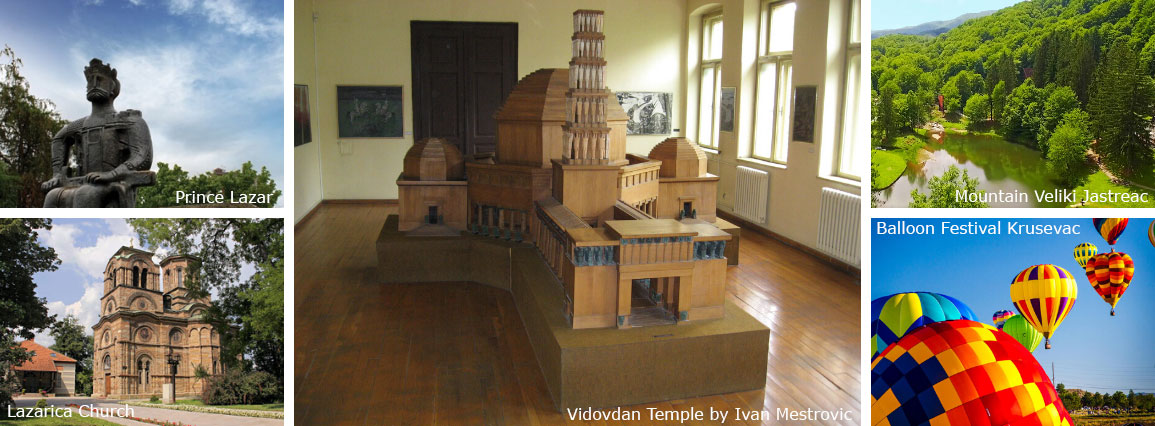
The National Museum of Krusevac has arranged chronologically from prehistory, with an emphasis on the middle ages, during the time of Prince Lazar, and his son Despot Stefan. The Museum's permanent exhibits, archeological, ethnographic, numismatic, cultural & historical, naturalist, fine and applied arts.
Exhibits that visitors are most attracted to are the replica of Lazar's dress, and the original model of Vidovdan Temple by world-famous Serbian sculptor Ivan Mestrovic, that should be built at the site of the Battle of Kosovo. But the idea has not been realized till today.
Donjon Tower, preserved today at an altitude of about 18 m, has built of gravel and broken stone, served as a defensive role, especially as the last resistance when the city wall had broken
Lazarica Church has rightly called the pearl of Moravian architecture. It has built-in 1375 or 1376 in honor of Prince Lazar's firstborn son Despot Stefan, heir of the throne, the patron of the Nemanjic Dynasty.
The manifestations that attract national and foreign tourists are, International Balloon Festival – Krusevac through the Clouds, held in August, Knight’s Tournament in Lazar’s Town, held in JuneMedieval Wedding in Lazarica Church held in June, and Motocross European Championship, held in June.
Spa Town Ribarska Banja
Spa Town Ribarska Banja located on the slopes of the Mountain Veliki Jastrebac (eng. Big Hawk) 35 km away from Krusevac, 72 km from Nis and 220 km from Belgrade. It is known as an oasis of pure mountain air, healthy food, and healing thermal springs. Due to the relatively high altitude and the surrounding mountain ranges, the spa has a sub-mountain climate. Generally, it doesn't have much rainfall annually, with the rainiest May and driest February.
Ribarska Banja (eng. Fisherman Spa) got its name after the fishermen who were catching the best quality trout for Prince Lazar.
A modern spa center has built on the foundations of an old Turkish Hammam from the 17th century, which is a combination of traditional Eastern style of enjoyment, and modern wellness & spa concept. Visitors can enjoy in many massages and treatments based on herbs, algae, wine, chocolate, salt rooms, saunas, whirlpools, fitness, outdoor, and indoor pool, Turkish Hammam. For art lovers, there is also an amphitheater for concerts, theater, literary, and music nights.
The modern Institute Ribarska Banja conducts medical treatments for the rehabilitation of patients with orthopedic, joint, and degenerative diseases, by bathing, drinking, washing of the throat, nose, and eyes. Indications for staying in Ribarska Banja are, rehabilitation after bone fractures and bone and joints surgeries, all forms of rheumatism (inflammatory, degenerative and extra-articular), post-traumatic or postoperative nerve paresis, Hemiplegia, and hemiparesis.

